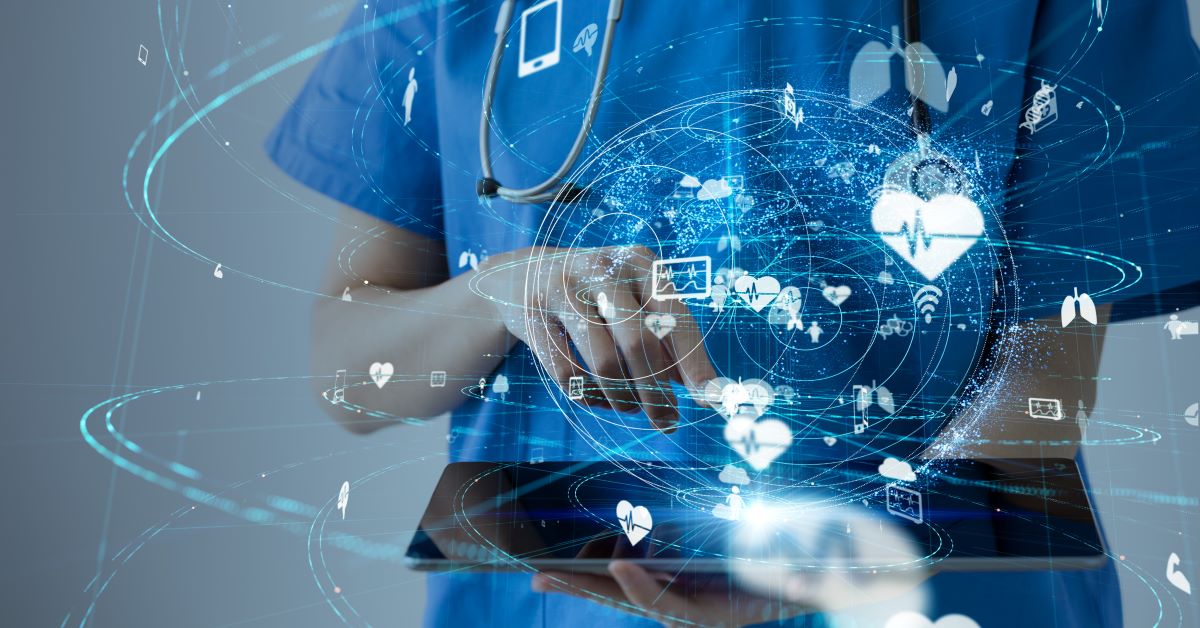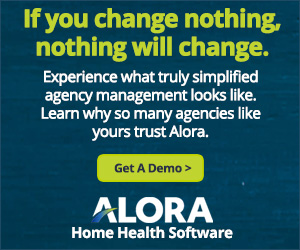
09 Feb Technology and Home Health Care
What are the latest technologies impacting home health care?
The field of home health care is rapidly evolving, providing new opportunities for healthcare professionals to make a real difference in the lives of patients and their families.
This blog looks at three key ways technology is changing home health care. It is essential to understand these changes, as the advancements offer the potential for a dramatic increase in the overall quality of care.
Impact of new technology
There are two broad categories of technological advancements.
- Physical devices that home health care providers will have access to
- Programs available to help fully use the data collected from the devices
Technology is getting easier to use. The new tools provide real-time data to doctors and nurses with less effort and error than with older technology. All this translates to better patient care and a better work experience for home health professionals.
Three critical areas of technological advancements that are changing home health care right now are:
- Remote patient monitoring: Wearable technology and telemedicine create a remote patient monitoring system that allows healthcare professionals to monitor and interact with patients remotely. Remote patient monitoring helps to identify potential issues early on, prevent complications, and provide easier access to care for your patients.
- Machine learning: AI technologies such as machine learning can analyze substantial amounts of data and identify patterns that can help healthcare professionals make more informed decisions about patient care and create personalized patient treatment plans
- Cloud-based technology: Telemedicine and wearables rely heavily on cloud-based technology to store and share data, allowing healthcare professionals to access patient data from anywhere and collaborate more effectively. Advancements in functionality of home health software, EVV system integration and other cloud-based solutions have made it almost impossible to operate a successful compliant agency without these workflow essentials.
Wearable devices are significantly impacting home health care, enabling patients to monitor their vital signs such as heart rate, blood pressure, and sleep patterns. These devices, such as smartwatches and fitness trackers, can also track physical activity and provide data on a patient’s overall health.
This data can identify potential health issues, such as sleep apnea, and monitor treatment effectiveness. Wearable devices also enable patients to manage their health better, which can help reduce the need for in-person visits to healthcare providers. This information can be especially beneficial for patients with chronic conditions who must closely monitor their health.
Telehealth & Telemedicine
Telehealth, or telemedicine, is also revolutionizing the delivery of home health care. This technology allows patients to consult with their healthcare providers remotely, using video conferencing, phone calls, or messaging. Telehealth eliminates the need for patients to travel to a healthcare facility and allows them to receive medical care in the comfort of their homes.
Telemedicine also enables healthcare providers to monitor patients remotely, which can help identify potential issues early on and prevent complications and can be especially beneficial for patients who live in remote or underserved areas or have mobility issues.
Remote monitoring devices
Remote monitoring devices are another tool that is making a significant impact on home health care. These devices monitor patients remotely, such as wireless blood pressure cuffs, wireless weight scales, and wireless glucometers.
These devices can provide healthcare professionals with real-time data to identify potential issues early on and prevent complications. This can be especially beneficial for patients with chronic conditions who must closely monitor their health. Remote monitoring devices also enable healthcare professionals to provide more efficient and cost-effective care, as they can monitor patients remotely without the need for in-person visits.
Medication management
Medication management devices are also making a significant impact on home health care.
These devices can help patients to manage their medications by reminding them when to take their pills and alerting them if they miss a dose. Medication management devices can also provide healthcare professionals with data on a patient’s medication adherence, which can help to identify potential issues early on and prevent complications. This can be especially beneficial for patients who take multiple medications and for patients who have difficulty remembering to take their pills. Medication management devices also enable patients to manage their health better, which can help to reduce the need for in-person visits to healthcare providers.
10 important technology aspects to focus on as a healthcare provider
Getting value out of homecare technology advancements requires proper use of the tools. If implemented and used poorly, they have the potential to cause frustration or even errors. Here are ten crucial things to focus on concerning home healthcare tech advancements.
- Security and Privacy: It is vital to ensure that patient data is protected, and that privacy is maintained. Home Health companies can achieve safety by implementing security measures such as encryption and secure data storage. It is crucial to comply with regulations such as HIPAA and GDPR.
- Interoperability: It is important to ensure that devices and systems can work together seamlessly to avoid compatibility issues and to ensure that data is shared and accessed quickly and securely.
- User-centered design: It is vital to design and test the technology with patients, caregivers, and other users to ensure that it is easy to use and meets their needs.
- Training: It is important to provide training for healthcare professionals and patients on how to use the technology effectively. Training ensures that the technology is used correctly and that patients can take advantage of all its features.
- Implementation and Support: A proper implementation plan that includes testing, piloting, and adequate support for the technology is crucial for its success.
- Scalability: It is important to choose technology that can grow and adapt as the needs of the patients and the healthcare organization change over time.
- Flexibility: The technology should be flexible enough to adapt to diverse types of patients, different care settings, and different healthcare providers to ensure that a wide range of patients can use it.
- Evaluation and monitoring: It is important to evaluate the technology’s effectiveness and monitor its usage to identify any issues that may arise and make adjustments as needed.
- Cost-effective care: It is important to consider the cost of the technology and ensure that it is cost-effective for the healthcare organization and the patients.
- Impact on the workforce: As technology is integrated, it is essential to consider how it will impact the workforce and how healthcare professionals can be trained and supported to adapt to these changes.
Interoperability
Interoperability is critical for home health care providers, as it allows them to focus on their primary role of providing care and support to patients.
When devices and systems are not interoperable, healthcare professionals may spend considerable time trying to resolve compatibility issues. Problems with interoperability can take away from the time they have to spend with patients, leading to frustration and burnout among healthcare professionals.
Interoperability also helps to ensure that patient data is accurate, consistent, and up to date. When devices and systems are interoperable, sharing and accessing patient data can be more accessible, leading to inaccuracies and inconsistencies. This can negatively impact the quality of care and can also lead to misdiagnosis and other errors.
Interoperability can also improve communication between healthcare professionals, patients, and their families. Healthcare professionals can share patient data and collaborate more effectively with interoperable devices and systems. This can help to improve the patient’s experience, and it can also lead to better outcomes.
Summary
In conclusion, innovative technologies such as wearable devices, telehealth, remote monitoring devices, medication management devices, and AI are significantly impacting the field of home health care. These technologies are providing new opportunities to improve the quality of care, make it more accessible and efficient, and empower patients to manage their health better. To fully realize the potential of these technologies and ensure that they are used effectively, there are a few key areas that should be focused on.
As mentioned previously, interoperability is crucial. It is important to ensure that devices and systems can work together seamlessly to avoid compatibility issues and to ensure that data can be shared and accessed quickly and securely. This will eliminate the need for healthcare professionals to spend their time troubleshooting and fixing tech issues, allowing them to focus on their primary role of providing care and support to patients.
Secondly, it is important to design and evaluate the technology with patients, caregivers, and other users in mind to ensure that it is easy to use and meets their needs. This will help ensure that the technology is used correctly and that patients can take advantage of all its features.
Third, with the increasing amount of data being collected and shared through home healthcare technology, it is important to ensure that patient data is protected and that privacy is maintained. Security measures such as encryption and secure data storage are crucial to preserving patient trust and ensuring compliance with regulations.
Finally, training and support are essential. It is important to provide training for healthcare professionals and patients on how to use the technology effectively. This helps ensure that the technology is used correctly and that patients can take advantage of all its features. A proper implementation plan that includes testing, piloting, and adequate support for the technology is crucial for its success.
All these technologies and their implementation have the potential to revolutionize the way home health care is delivered and received. It will provide new opportunities to improve the quality of care, make it more accessible and efficient, and empower patients to manage their health better.

Alora home health software is a comprehensive system for both skilled and non-skilled home care that features the latest home health technology. Packed with a host of features developed for simplicity and efficiency in agency workflow, for more than 16 years Alora has provided both administrators and field staff with integrated solutions that make providing high-level patient care a joy, while fostering regulatory compliance and agency growth.




No Comments